Who would have thought that marijuana includes different plant types with completely different effects and benefits? Understanding the Indica vs Sativa distinction is essential if you want to choose the right cannabis strain for recreational or medicinal use. Their origin, climate, effects, and physical traits can guide you in selecting seeds that match your needs and growing environment.
Marijuana is famous for its mind and body effects, but not all strains are created equal. Although Cannabis Sativa and Cannabis Indica belong to the same family and share some components, they differ in both appearance and the way they make you feel.
Let’s explore the main differences between Indica vs Sativa and help you decide which one might be best for you.
Who would have thought that in marijuana there are different types of plants with entirely different effects and benefits? The origin, the climate, the effects, and the physical characteristics are crucial in order, to differentiate the type of plant that you are going to use either in the clinical, pharmaceutical, or recreational field, as well as to know between Cannabis Sativa and Cannabis Indica in order, to be able to make the best selection of seeds according to your needs.

Marijuana is a well-known plant for its mind and body effects and it’s split into two main types: Sativa and Indica. Even though they come from the same family and have similar ingredients, they’re different in how they look and what they do when you use them. Let’s break it down simply:
• Short, bushy plant with wide leaves
• Thrives in cooler, mountainous regions
• Compact and dense growth—great for indoor cultivation
• Tall, slim plant with thin, pointed leaves
• Prefers warm, tropical climates
• Airy structure, ideal for outdoor growing
The effects of Indica vs Sativa are what truly set them apart:
• Indica: Known for its relaxing, sedative properties. It’s like getting cozy under a blanket after a long day. Ideal for nighttime use or for managing anxiety, pain, or insomnia.
• Sativa: Stimulating and energizing. It boosts creativity, focus, and sociability—perfect for daytime use or social activities.
To simplify: If you’re looking to unwind, go with Indica. If you’re after mental stimulation and energy, choose Sativa.
One of the key differences between Indica vs Sativa lies in their origin and how each adapted to its native environment over time. These adaptations have shaped not only how the plants grow, but also how they respond to temperature, humidity, light exposure, and even pests.
Cannabis Sativa originates from equatorial regions like Thailand, Jamaica, Colombia, and Mexico—areas known for long, sunny days, high humidity, and stable temperatures year-round. To thrive in these conditions, Sativa plants evolved to:
• Grow tall and slim to compete for sunlight in dense tropical foliage
• Develop long, narrow leaves to reduce moisture retention and prevent mold
• Have a longer flowering cycle to align with consistent day lengths in their native regions
Thanks to these traits, Sativa strains are well-suited for outdoor growing in warm, tropical, or subtropical climates.
In contrast, Cannabis Indica comes from the rugged Hindu Kush mountain range, which spans Afghanistan, Pakistan, and parts of Northern India and China. This region is characterized by:
• Cold nights, strong winds, and seasonal changes
• Rocky terrain and nutrient-poor soils
• Shorter periods of daylight during the flowering season
To survive these harsh conditions, Indica plants evolved to:
• Remain short and compact, hugging the ground for wind protection
• Grow broad, dense leaves that absorb maximum light during shorter days
• Develop dense, resinous buds to withstand cold and deter pests
• Flower quickly, usually within 6–8 weeks, to make the most of a short growing season
These environmental adaptations make Indica strains ideal for indoor growing or for colder, mountainous outdoor climates.
🌱 Understanding the natural habitats of Indica vs Sativa helps growers choose the best strain for their climate and growing conditions—a key step toward a healthy, productive cannabis harvest.
The physical differences between Indica vs Sativa go far beyond height or leaf shape. Each subspecies has distinct features that affect not just appearance, but also growth habits, yield potential, and suitability for certain environments or cultivation styles.
Sativa plants are known for their elegant, towering stature and open, airy structure. Here’s what sets them apart:
• Height and Structure: Sativa strains can reach impressive heights of up to 20 feet (6 meters) in optimal outdoor conditions. Their slender and elongated shape makes them more suitable for outdoor or greenhouse grows where space isn’t an issue.
• Leaves: The leaves of Cannabis Sativa are long, narrow, and light green. With serrated edges and up to 13 leaflets per leaf, their design helps reduce moisture buildup—an evolutionary adaptation to humid tropical climates.
• Branching: Sativa plants feature less dense branching with longer internodal spacing. This open structure promotes better air circulation, reducing the risk of mold in wet or humid conditions.
• Flowers (Buds): Sativa buds are longer, looser, and “fluffier” than Indica buds. They grow in spaced clusters, which is why Sativas often take longer to flower—typically between 10 to 16 weeks.
• Trichomes: While both types produce trichomes (the resin glands that hold cannabinoids), Sativas often concentrate them more on the flowering tops and sugar leaves, enhancing their psychoactive potency.
• Root System: Sativa strains develop a deep taproot, allowing them to draw water and nutrients from deeper soil levels. This makes them more drought-tolerant and suitable for dry outdoor regions.
• Growth Cycle: The longer vegetative stage of Sativas results in larger plants and potentially higher yields, though it requires more time and space.
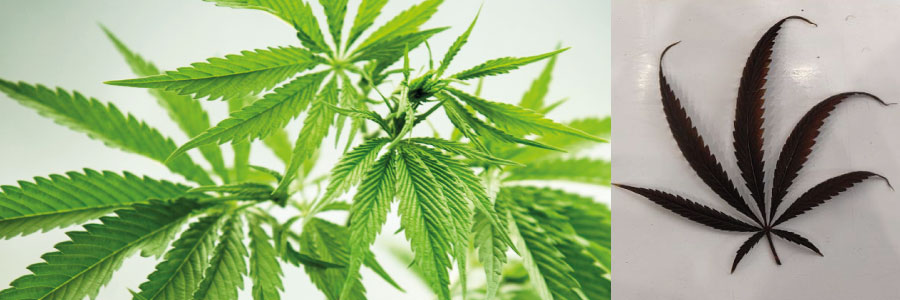
Indica strains are compact, fast-growing, and built to thrive in tough, mountainous regions. Here’s a breakdown of their signature traits:
• Height and Structure: Indica plants are shorter and bushier, usually reaching 2 to 4 feet (0.6 to 1.2 meters) in height. Their dense structure makes them ideal for indoor grows or space-limited environments.
• Leaves: With broad, dark green leaves and 7 to 9 wide-spaced leaflets, Indica plants are easily recognizable. The wider leaves help maximize photosynthesis under lower light conditions.
• Branching: Indicas have short internodal spacing, resulting in thick, bushy plants. This contributes to a higher bud-to-leaf ratio, making them efficient for growers.
• Flowers (Buds): Indica buds are dense, heavy, and resinous, clustering tightly around the plant’s nodes. These compact flowers often yield more product per square foot in controlled settings.
• Trichomes: Indica strains are trichome-rich, covering buds and surrounding leaves with a thick layer of sticky resin. This resin is loaded with THC and CBD, contributing to their strong therapeutic and relaxing effects.
• Root System: Indicas develop a shallower, more spread-out root system, making them adaptable to different soil types and highly efficient in nutrient uptake.
• Growth Cycle: With a shorter vegetative phase and fast flowering time (6–8 weeks), Indicas are popular among cultivators looking for quick, multiple harvests throughout the year.
🌿 These morphological differences between Indica vs Sativa play a major role in determining how, where, and why each type is cultivated—and what kind of experience you can expect from each strain.
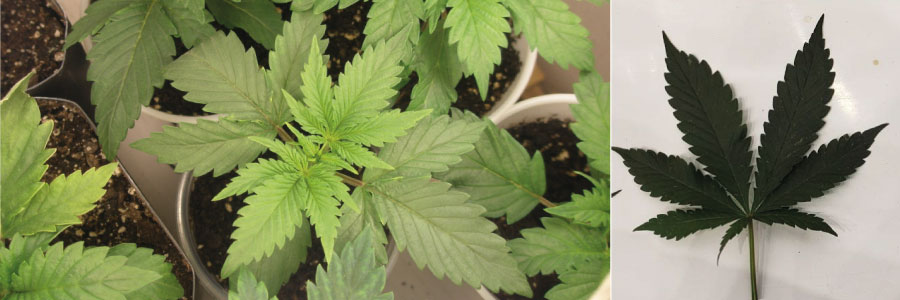
While Cannabis Indica and Cannabis Sativa may look different on the outside, it’s what’s inside that truly defines their psychoactive effects, therapeutic potential, and overall user experience. These two subspecies contain many of the same cannabinoids and terpenes, but in different ratios, which is what causes them to produce distinct effects on the body and mind.
Sativa strains are typically associated with a stimulating high, making them popular for daytime use and creative activities. Here’s a closer look at their internal chemistry:
• THC Levels: Sativas tend to have higher concentrations of THC (tetrahydrocannabinol)—the primary psychoactive compound in cannabis. This contributes to their energizing, euphoric effects.
• CBD Content: They usually contain lower levels of CBD (cannabidiol), which means the calming, body-soothing properties are less pronounced.
• Terpenes: Common terpenes found in Sativas include limonene, pinene, and terpinolene, which enhance alertness, creativity, and mood elevation.
• Effects: Increased focus, improved mood, enhanced sensory perception (colors, sounds, and taste), and boosted sociability. May also stimulate appetite and help manage stress, depression, and fatigue.
Indica strains, by contrast, are valued for their deeply calming and sedative effects, ideal for evening use, relaxation, and physical relief.
• THC Levels: Indicas typically have moderate to high THC, but often in slightly lower amounts than Sativas.
• CBD Content: These strains often contain higher or more balanced levels of CBD, which enhances their soothing and therapeutic benefits.
• Terpenes: Indicas are rich in myrcene, linalool, and caryophyllene, which are associated with pain relief, muscle relaxation, and sleep support.
• Effects: Known for their “body high”, Indicas can help ease chronic pain, insomnia, muscle tension, and anxiety. They are often used as nighttime strains due to their sedative effects.
🌿 Remember: although both Indica and Sativa contain THC, the balance of cannabinoids and terpenes is what determines the intensity, duration, and type of experience.
While THC and CBD get most of the attention, other minor cannabinoids (like CBG, CBN, and THCV) and aromatic terpenes also influence how a strain affects you. This synergy is often referred to as the entourage effect, where all the compounds in the plant work together to enhance therapeutic effects.
Keep in mind that your personal body chemistry, tolerance, and method of consumption (smoking, vaping, edibles) can also affect how you respond to a given strain. Some people may feel relaxed on a Sativa, while others find certain Indicas uplifting. Always start low and go slow, especially if you’re new to cannabis.
Choosing Between Indica and Sativa for Wellness and Lifestyle
When it comes to choosing between Indica vs Sativa, the right strain depends entirely on your goals, lifestyle, and wellness needs. Whether you’re looking for creative energy, restful sleep, or relief from chronic symptoms, understanding what each type offers will help you make an informed choice.
Sativa strains are often chosen by those who want to stay active, alert, and socially engaged. Ideal for daytime use, they’re known to enhance:
•✨ Creativity and focus – Great for artistic projects, brainstorming, or working
•😄 Mood and sociability – Useful for social situations or combating social anxiety
•🌞 Daytime productivity – Provides mental clarity and energy without feeling sluggish
• Easing mild anxiety and depression
• Relieving fatigue
• Reducing nausea
• Stimulating appetite for those dealing with eating disorders or chemotherapy
✅ Sativa is your go-to if you’re seeking a cerebral high, motivation, or relief from low energy.
Indica strains are better suited for people looking to unwind, relax, or get restful sleep. They’re typically preferred in the evening or when no intense mental or physical tasks are required.
•🌙 Promoting deep sleep and reducing insomnia
• 💆 Relieving chronic pain, muscle spasms, and tension
•🧘♀️ Easing stress and general anxiety
•🛋 Producing a calming, “couch-lock” effect for full-body relaxation
Popular among medical cannabis users, Indicas are used to manage:
• Neuromuscular disorders like tremors or seizures
• Arthritis and inflammatory conditions
• Appetite stimulation for patients undergoing intense treatments or illness
✅ Choose Indica if your goal is stress relief, pain management, or restful sleep.
Most modern cannabis strains are actually hybrids—crossbreeds of Indica and Sativa. These offer the best of both worlds, blending traits like:
• Mellow relaxation without sedation
• Mental clarity with body comfort
• Targeted therapeutic effects
Hybrids are typically labeled as:
• Indica-dominant (more relaxing)
• Sativa-dominant (more energizing)
• Balanced hybrid (a mix of both effects)
🧪 If you’re new to cannabis or have mixed needs, a hybrid strain may be your best starting point.
|
Characteristic |
Indica |
Sativa |
Hybrid |
|---|---|---|---|
|
Plant Size |
Short, bushy (2–4 ft) |
Tall, slender (up to 20 ft) |
Varies depending on dominance |
|
Leaf Shape |
Broad, dark green |
Narrow, light green |
Mix of both leaf types |
|
Climate Preference |
Cool, mountainous climates |
Warm, tropical climates |
Adaptable to many environments |
|
Flowering Time |
Fast (6–8 weeks) |
Slow (10–16 weeks) |
Moderate (8–12 weeks) |
|
Yield Type |
Dense, heavy buds |
Fluffy, airy buds |
Balanced or strain-specific |
|
Effect Type |
Body high, relaxing, sedative |
Cerebral high, energizing, uplifting |
Balanced mental and physical effects |
|
Best Time to Use |
Evening, nighttime |
Morning, daytime |
Depends on strain dominance |
|
Medical Use |
Pain, insomnia, anxiety, muscle spasms |
Depression, fatigue, stress, nausea |
Versatile—targeted for specific therapeutic outcomes |
|
Recommended For |
Relaxation, sleep, recovery |
Focus, creativity, socializing |
Flexible—customized experiences |
|
Examples |
Northern Lights, Afghan Kush, Granddaddy Purple |
Sour Diesel, Jack Herer, Super Silver Haze |
Blue Dream, Gelato, Girl Scout Cookies |
💡 Tip for growers: If you’re cultivating at home, choose Indica strains for compact indoor setups and Sativas for spacious outdoor gardens. Hybrids offer flexible growing and effect options.
¡Vamos allá! 🎯 A continuación, desarrollo la sección de “Alternative Uses” de forma más clara y amigable, manteniendo el contenido original pero con mejoras en estructura, lenguaje y enfoque SEO.
Beyond recreational and basic medical use, both Indica and Sativa strains have a wide range of alternative therapeutic applications. Thanks to their unique cannabinoid and terpene profiles, these subspecies can be tailored to specific wellness goals or conditions.
Sativa strains are not just for fun—they offer serious benefits for those needing a mental boost or emotional balance throughout the day.
Common alternative uses of Sativa strains:
•🧠 Manage depression and mood disorders: The uplifting effects of Sativa may help improve motivation and outlook.
•🔄 Support ADHD and focus-related challenges: Some users report improved concentration and reduced mental fog.
•🍽️ Stimulate appetite: Ideal for patients experiencing appetite loss due to illness or medication.
•😷 Ease nausea: Particularly beneficial for chemotherapy patients or those with gastrointestinal sensitivity.
•🎨 Enhance creativity: Perfect for artists, musicians, and anyone looking to spark imaginative thinking.
🟩 Sativas are ideal for daytime use, especially for those who want to stay functional and clear-headed.
Indica’s deeply calming effects go far beyond just helping you sleep. They can relieve physical discomfort, calm the nervous system, and support recovery from chronic conditions.
Common alternative uses of Indica strains:
•💤 Combat insomnia: Indicas are known for promoting deep, restorative sleep.
•💪 Relax muscle tension: Helpful for people with spasms, cramps, or physical injuries.
•🧘♂️ Manage anxiety and stress: The body-centered effects can bring a sense of peace and groundedness.
•🤢 Treat digestive issues: Frequently used to reduce inflammation and discomfort in gastrointestinal disorders.
•🔥 Alleviate chronic pain: Especially effective for nerve pain, arthritis, or back problems.
🟦 Indicas are often recommended for nighttime use or for patients who need to disconnect from physical or emotional discomfort.
Because most modern strains are hybrids, it’s common to find cannabis varieties that target multiple needs at once. For example, some hybrids are great for pain relief without heavy sedation, while others may offer mental clarity with just enough relaxation.
This flexibility has made hybrids the go-to choice for:
• Patients managing complex symptoms
• Recreational users wanting a balanced high
• Growers in search of adaptable genetics
🔄 Choosing a hybrid allows for personalized effects depending on the strain’s genetic balance.
Now that you understand the key differences between Indica vs Sativa, you’re ready to choose the perfect cannabis strain for your lifestyle or grow setup. Whether you’re seeking physical relaxation, creative energy, or medical relief, Amsterdam Marijuana Seeds has a curated selection just for you.
🌿 Looking to relax and unwind?
Explore our potent and soothing
☀️ Need an energizing daytime boost?
Browse our uplifting
⚖️ Want the best of both worlds?
Discover our popular
🚀 New to growing?
Try our easy and fast
👉 Autoflowering cannabis seeds
💊 Seeking natural relief?
Check out our high-CBD
💡 Tip: All of our seeds are discreetly shipped worldwide and backed by a germination guarantee. Whether you’re a beginner or a seasoned grower, we’re here to help you grow with confidence.
Understanding the differences between Indica vs Sativa is the first step toward a more personalized and effective cannabis experience. From their origins and growth habits to their effects and medical uses, each subspecies offers something unique.
• Choose Indica for calm, comfort, and body relief.
• Choose Sativa for energy, clarity, and creative spark.
• Or go for a hybrid to enjoy the best of both worlds.
Whether you’re growing for the first time or searching for the perfect strain to suit your wellness routine, Amsterdam Marijuana Seeds is here to guide you.
🌱 Ready to start your growing journey?
👉 Browse our full seed catalog and find the strain that fits your vibe.
💌 Have questions or need help choosing?
Reach out to our support team or check out our Grow Guide for step-by-step advice.
So which is better? It depends on what you need. If you want energy and to be active, sativa is like coffee. If you want to relax and unwind, indica is like a chamomile tea. And remember, always use them responsibly and follow the laws of your place of residence.
The important thing is to know what you're looking for: Energy and creativity? Sativa is like an energy drink for your mind. Relaxation and calm? Indica is like a hot chocolate for your body.
Indica strains are the ones that generally make you feel sleepy. They are associated with relaxing and sedating effects, which is why many people prefer them for nighttime or when they want to relax and unwind. On the other hand, sativas tend to be more stimulating and energizing, making them less likely to make you feel sleepy.
Even though they come from the same family and have similar ingredients, they're different in how they look and what they do when you use them. Let's break it down simply: What the plants look like: Indica: This plant is short and looks like a bush with wide leaves. It grows well in cooler and mountainous areas. Sativa: This one is tall and thin, with skinny, pointed leaves, kind of like a young pine tree. It likes hot and humid places. How they make you feel: Indica: It chills you out and can make you sleepy, like when you're getting cozy in bed after a long day. Sativa: It energizes you and wakes up your mind, great for when you need to do things that require imagination or when you're hanging out with friends. To put it simply: if you want to relax, go for indica. If you want to be more alert and active, go for sativa. We'll explain more about this soon so you can better understand how each one affects people differently.
Check the video of this blog:
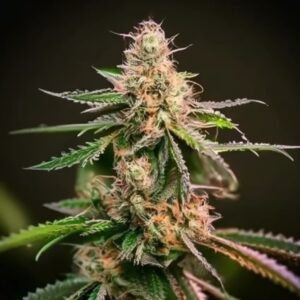


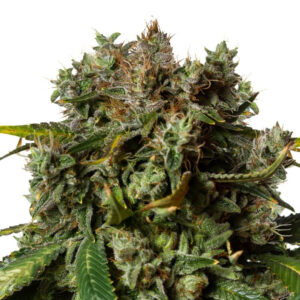









Related Posts
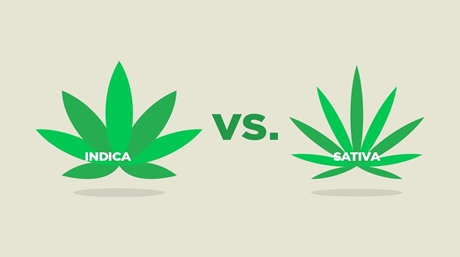
Cannabis Indica describes the psychoactive varieties discovered in India, where it was harvested for its seeds, fiber, and hashish production. Cannabis Indica was named by Jean-Baptiste Lamarck. Indica refers to stout, broad-leaf plants that provide sedating effects. Cannabis Sativa describes hemp plants found in Europe and Western Eur-Asia, where it was grown for its fiber and seeds. Cannabis Sativa was named by Carl Linneaus.

Cannabis has two primary compounds that are gaining attention in the medical community, tetrahydrocannabinol (THC) and cannabidiol (CBD). Both of these compounds have different properties and effects on the body and mind. Understanding these differences is important when seeking to use these compounds for therapeutic benefits.
What are THC and CBD?
THC and CBD are cannabinoids that are naturally found…

You’re smoking is a sativa, indica, or hybrid. Not that I wouldn’t have found it interesting, but all I knew was toking on a joint made me feel some type of way. Usually a pretty awesome positive kind of way.